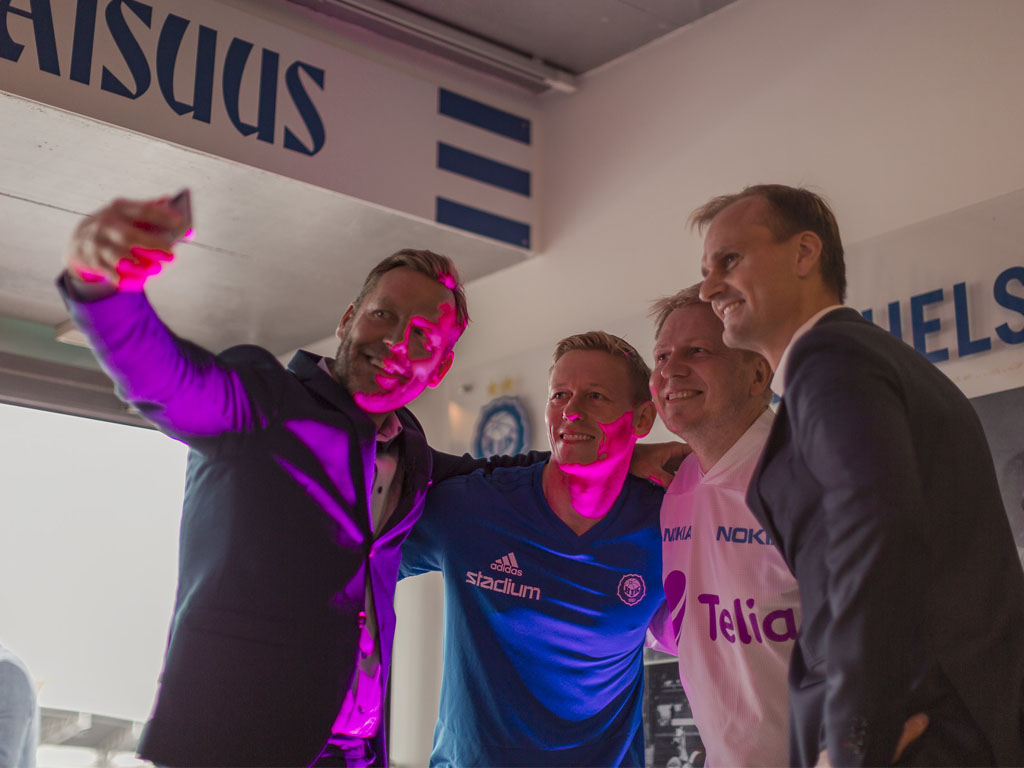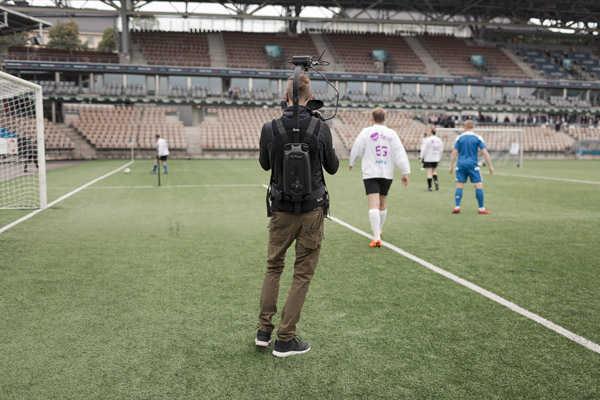We use cookies to personalise content & improve our services. By using our site, you consent to our Cookie Policy. Read more
5G came to Helsinki – what happened behind the scenes?


The wait is now over, and 5G is here. Telia 5G Arena turned literally into a 5G arena on the first days of September, when the potential and high capacity of a network faster than the human brain were demonstrated in a pre-commercial 5G network. For what was the network used on the launch day?
Virtual reality is a better place without latency
When Heli Partanen, Head of Telia’s Consumer Business, kicks the ball, the goalkeeper on the screen throws himself after it. In the demo arranged by Nokia and Telia, the participants had a go at shooting a virtual penalty kick – at first in the 4G and then in the 5G network. The demo also served as a symbolic kick-off for the 5G era.
“There was a significant difference in the goalkeeper’s moves between the different networks,” Partanen described her experience. “5G transferred the data to the game at such a high speed that, unlike in 4G, the virtual goalkeeper managed to catch the balls.” (The article continues below.)

Many virtual and augmented reality solutions of the future require data to be transferred in the network in real time and without latency. The demo also proved in practice how big an impact latency has in the increasingly popular online gaming.
Real-time VR and AR solutions do not support only entertainment and gaming applications, but they also provide companies with new kinds of opportunities, for instance, to serve customers and to improve customer experience. In the future, they will enable a customer, for example, to visit an online store and check out the offering in a genuine-like environment.
Augmented reality and 5G technology have already been exploited in an industrial environment, and the next step for Stora Enso and Telia will be to proceed from pilot tests to production. The new applications enable the specialists at Stora Enso’s paper mill in Oulu to get the data they need in real time and in an easy-to-understand virtual format.
360 video requires capacity
On the launch day, the 5G network also carried 4K 360 video, when the 4K 360 camera and two ordinary cameras placed on the field of Telia 5G Arena transmitted real-time video to the demo point inside the arena.
“We made a mobile app whose 360 view makes it possible to watch several video streams at the same time – easily and comfortably,” said Finwe Oy’s CEO Juha Kela. “In addition to the TV broadcast, the viewer can see the close-up video from the wireless camera and also the team’s social media wall, which is updated in real time with social media posts related to the game.” (The article continues below.)

“The high-speed latency-free 5G network makes it possible to implement such services. We created the app and the streaming service in cooperation with FinCloud, utilizing the 5G network built by Telia and Nokia,” Kela said.
The services of Finwe and FinCloud can also be utilized for other purposes, such as in industry, for instance in project planning, maintenance and training, and for security-related needs.
IoT sensors for land, sea and air – and the human body
5G will enable full-scale utilization of IoT technology, when data is transferred in real time and, if necessary, in big volumes at the same time. At Telia 5G Arena, sensors were attached to Telia’s 5G Program Director Janne Koistinen, who played in the event against HJK in the Telia and Nokia team.
“This was the first time we used sensors operating in the LTE-M network in a live event. LTE-M is one of the 5G technologies,” said Telia’s 5G specialist Mika Raitola. “What we see in this demo is Janne Koistinen’s speed, location and heart rate practically in real time. Because the event was arranged at Telia 5G Arena, data on players seemed a natural application. However, a similar solution can be utilized, for example, with any product, device or service, when real-time data and status data are needed.”
When you want to add intelligence to products and services, there is no need to wait for the commercial 5G network. The NB-IoT network is part of the 5G technology and already available for Telia’s customers today. (The article continues below.)

“NB-IoT is a network technology that has been developed especially for the needs of IoT and the Industrial Internet. Unlike 5G, it is also suitable for sites with coverage challenges, such as sensors to be placed under the ground. It is best suited for applications where data is sent irregularly and in small volumes,” Raitola explained.
Many kinds of data were thus transferred over the network on the launch day. The demos illustrated the key features of 5G, i.e. real-time and latency-free data transfer, large capacity and IoT’s potential, which will become fully available after the launch of the commercial 5G network. More demos and pilots implemented by Telia and its partners will be seen during the fall. The opportunities offered by the 5G technology can be planned and tested in the 5G Finland network even before the commercial 5G network is launched.
